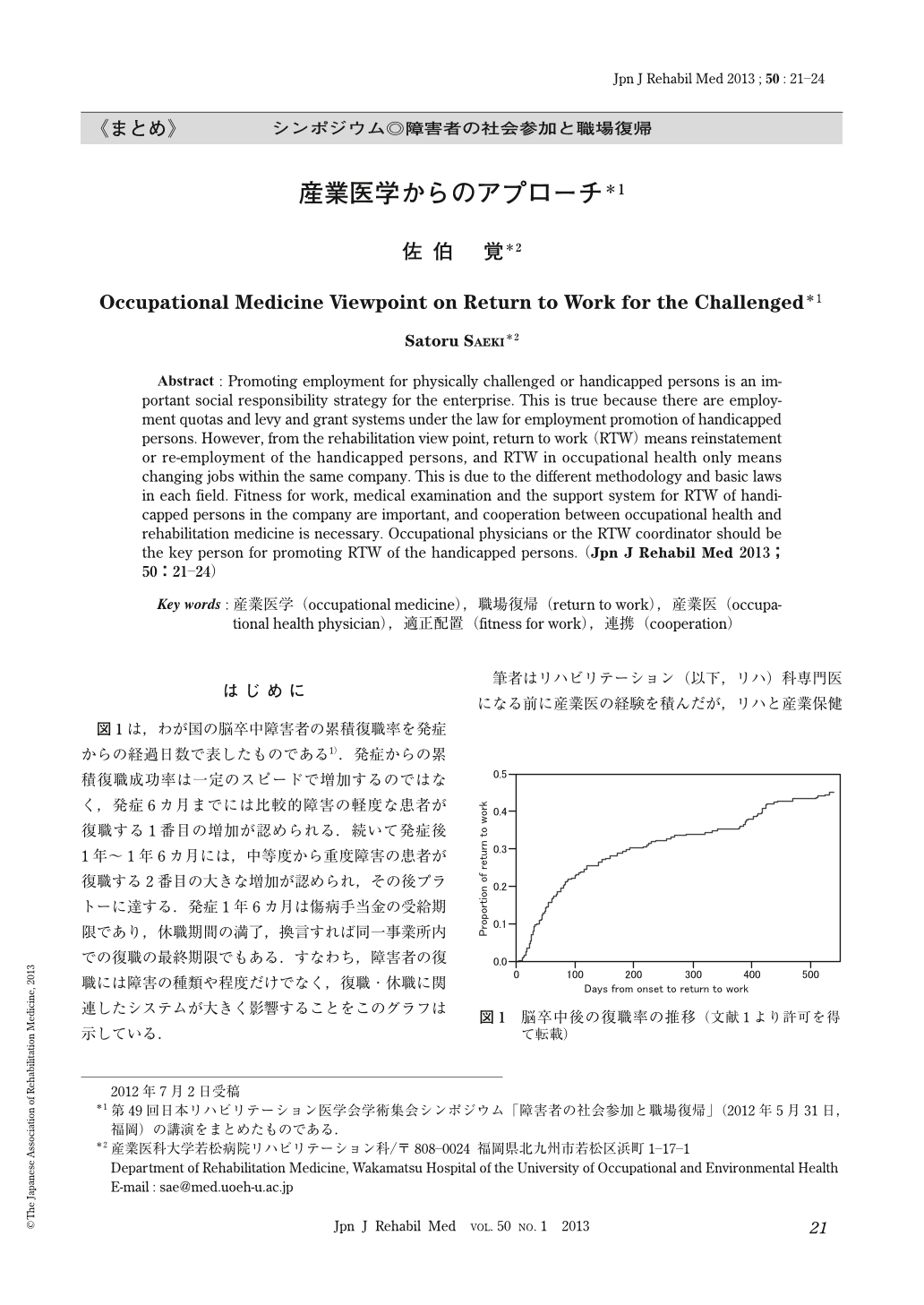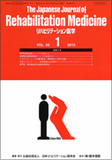Japanese
English
- 販売していません
- Abstract 文献概要
- 1ページ目 Look Inside
- 参考文献 Reference
はじめに
図1は,わが国の脳卒中障害者の累積復職率を発症からの経過日数で表したものである1).発症からの累積復職成功率は一定のスピードで増加するのではなく,発症6カ月までには比較的障害の軽度な患者が復職する1番目の増加が認められる.続いて発症後1年~1年6カ月には,中等度から重度障害の患者が復職する2番目の大きな増加が認められ,その後プラトーに達する.発症1年6カ月は傷病手当金の受給期限であり,休職期間の満了,換言すれば同一事業所内での復職の最終期限でもある.すなわち,障害者の復職には障害の種類や程度だけでなく,復職・休職に関連したシステムが大きく影響することをこのグラフは示している.
筆者はリハビリテーション(以下,リハ)科専門医になる前に産業医の経験を積んだが,リハと産業保健の両分野で,障害者の復職に対する考え方の違いを大きく実感した2,3).この考え方の違いを理解していないと「ボタンの掛け違い」が生じ障害者の復職を阻害することがある.この違いの根底には産業保健分野独自の考え方やシステムがある.本シンポジウムでは,障害者の復職において,企業の適正配置の考え方,復職健診システムや復職支援システムについて述べたい.
Abstract : Promoting employment for physically challenged or handicapped persons is an important social responsibility strategy for the enterprise. This is true because there are employment quotas and levy and grant systems under the law for employment promotion of handicapped persons. However, from the rehabilitation view point, return to work (RTW) means reinstatement or re-employment of the handicapped persons, and RTW in occupational health only means changing jobs within the same company. This is due to the different methodology and basic laws in each field. Fitness for work, medical examination and the support system for RTW of handicapped persons in the company are important, and cooperation between occupational health and rehabilitation medicine is necessary. Occupational physicians or the RTW coordinator should be the key person for promoting RTW of the handicapped persons.

Copyright © 2013, The Japanese Association of Rehabilitation Medicine. All rights reserved.


